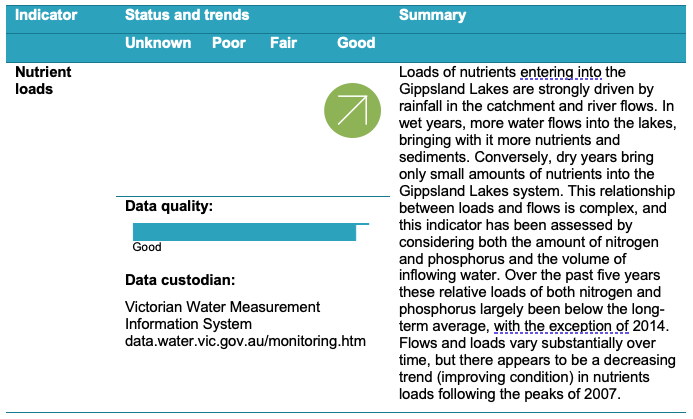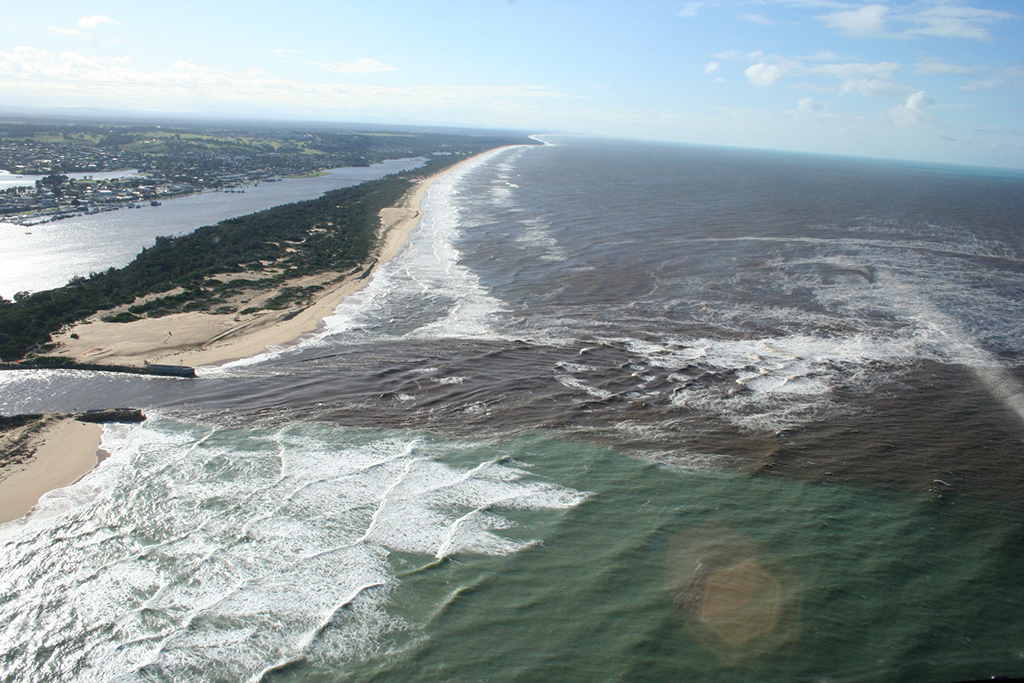
What do the results mean?
Nutrient loads entering the Gippsland Lakes are strongly driven by rainfall in the catchment and river flows. In high rainfall years, more water flows into the Lakes, bringing with it more nutrients and sediments. This relationship between loads and flows is complex, and this indicator has been assessed by considering both the amount of nitrogen and phosphorus and the volume of inflowing water. Over the past five years these relative loads of both nitrogen and phosphorus have been mostly lower than the long-term average, suggesting an improvement in nutrient loads entering the lakes. Flows and loads vary substantially over time and so more data is needed for further clarification if this is a sustained trend.

Technical Reports
Case Study
Nutrients and algal blooms in the Gippsland Lakes
Extensive work has been conducted on the algal blooms and phytoplankton dynamics of the Gippsland Lakes (Webster et al. 2001, Grigg et al. 2004, Beardall 2008, Cook et al. 2008, Holland and Cook 2009, Holland et al. 2009, 2013a, 2013b, Day et al. 2011 among others). Conditions that lead to Nodularia blooms in the Gippsland Lakes are now relatively well understood (Day et al. 2011, Cook and Holland 2012).
In general, blooms of the blue-green algae occur when salinities are low, temperatures are high and the nitrogen is in short supply. Stratified conditions are also important as this facilitates the movement of phosphorus out of the sediments under the low oxygen conditions in the bottom waters, particularly in Lake Victoria. They also allow cyanobacteria to dominate over diatoms, as they can often regulate their buoyancy and thus position in the water-column, whereas diatoms, being heavier than water, tend to sink unless maintained in the water-column by periodic mixing. The environmental conditions for Nodularia blooms were identified by Cook and Holland (2012) as:
Salinities between 9 and 20 ppt (or PSU)
Inorganic nitrogen concentrations < 0.4 μM
Inorganic nitrogen to reactive phosphorus ratios < 5:1
Elevated water temperatures
While all species of phytoplankton have requirements for phosphorus, blue-green algal species such as Nodularia have the ability to fix atmospheric nitrogen. This is thought to competitively advantage these species when the nitrogen available for other algal species is low.
While low inorganic nitrogen concentrations may lead to blooms of the nitrogen fixing Nodularia, large inputs of inorganic nitrogen (like those that occurred after the 2006/7 bushfires) can trigger blooms of other algal species and were implicated in the bloom of Synechococcus sp. (Cook and Holland 2012).




